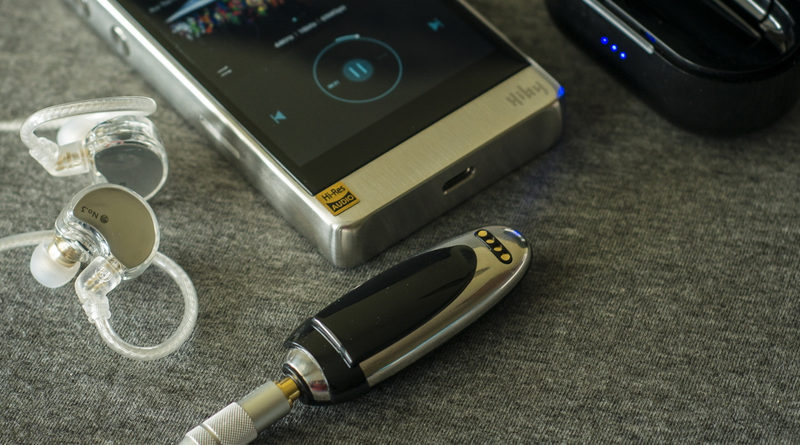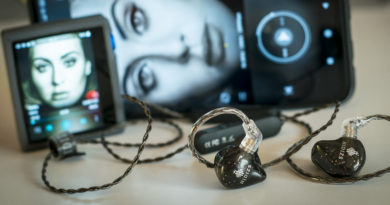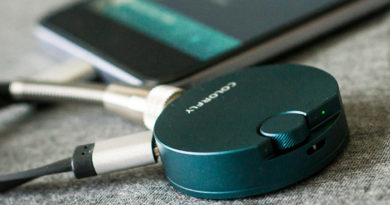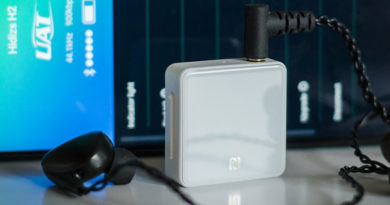HiBy W5 — 192KHz Bluetooth audio breakthrough

It is really interesting to observe how the most active brand names grow as the time passes. The most enterprising and active ones join the rank of trendsetters in the related industries and spread their influence over the entire conglomerates of manufacturers and customers. Examples are not that numerous but there are some apparent and unarguable cases for the past several years: DJI with their drone technologies, Apple that is constantly changing trends, Tesla that shifts the world to green car energy and so on. Those companies are shifting the mountains of past beliefs to expand the boundaries of future expectations. Same happens in a smaller scale where fastly growing companies would also strive for better technology and standards. Just think of new graphene batteries, flexible displays, use of modern materials and large amount of Internet services that are accepted by mass market as new standards.

Now, lets narrow down to audio domain. De facto, HiBy has already joined the vanguard of the pushing force in this industry. This brand has started with HiBy Music application for the most popular mobile OS, introduced widely used functions like MSEB and HiBy link. They have also created and licensing their HiBy OS firmware to different manufacturers (doesn’t this reminds you of Xiaomi brand history?). One of their recent valuable deeds is the development of several HiRes DAPs with the superior price to performance ratio that forced a new spin of competition among all industry members. ‘
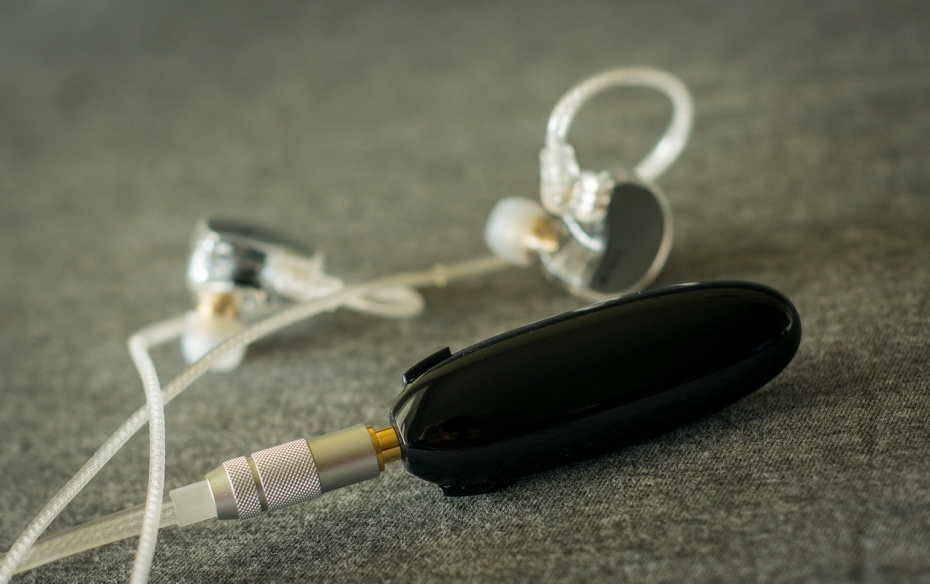
Today, we would like to demonstrate that HiBy has other trumps up their sleeve by presenting HiBy W5 — the world’s first Bluetooth DAC/AMP receiver with UAT (Ultra Audio Transmission) codec that might set the new wireless audio standards for the entire industry.
HiBy W5 technical specifications and description:
- Type: Bluetooth audio receiver with integrated DAC&
- Connectivity: Bluetooth 5.0 (CSR8675)
- Bluetooth audio codecs: SBC, AAC, apt-X, apt-X_LL, apt-X HD, LDAC, UAT
- Max. bit rate: 1.2Mbps
- Max. bit depth: 24bit
- Max. sampling frequency: 192kHz
- DAC& chip: ESS Sabre ES9218P
- SNR: 118dB
- THD+N: -103dB
- Output power: 80mW+80mW@32Ω
- Audio output: 3.5mm
- Control elements: 1 sensor button + LED indicator
- Battery life: ≥20 hours (W5 battery + cradle battery), ≥100 hours at standby
Quoted playback time based on using the AAC codec - Compatibility: Windows, Android, iOS, MacOS
- Other features: intergrated mic for voice calls, IP67 waterproof, remote control by HiBY Music app
- Weight: 19.5g (W5), 57.1g (cradle)
Link to official HiBy W5 page
Let’s go over UAT and HW part: UAT stands for Ultra Audio Transmission technology that was developed by HiBy as new generation of Bluetooth audio codec superior to all previous standards ever presented by other companies.

Just a short comparison of main specs of the two latest audio codecs developed by Qualcomm (apt-X HD) and Sony (LDAC):

In other words, this table shows that HiBy has managed to take the advantage of Bluetooth 4.2/5.0 and overcome previous bandwidth limitations that didn’t allow sufficient data transfer speeds, consequently lowering sampling frequency. Of course, in order to to make this work HiBy had to develop its own algorithms and wrap it with Bluetooth standards. Moreover, this means that HiBy should have also developed and tested UAT for transmitting and receiving devices. This means integration with different operating systems and various microcontroller devices in future. Along with the codec, Bluetooth 4.2/5.0 is a must to get UAT working.
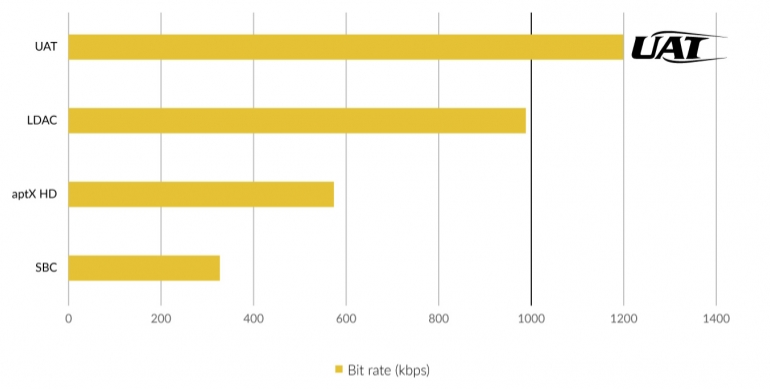
If to summarize all of this, theoretically, introduction of UAT codec together with the latest BT standard solve the issue of downsampling audio library, increasing data transfer rate that should improve audio quality and overall satisfaction of going wireless.
As far as we understand, HiBy might be pushing their innovation to different vendors right after confirming that it is perfectly stable. UAT supports any Android mobile phone with HiBy Music app and DAPs like HiBy R6, R6Pro, R3, Cayin N8, Hidizs AP80. Moreover, W5 is compatible with all currently available BT audio codecs and could be paired to any other audio source supporting Bluetooth. Therefore, you can use it with any DAPs or smartphones and enjoy all advantages of the latest wireless audio transmission technologies.

Let’s move on to the device itself, starting with the externals.
HiBY W5 packaging, design and build:
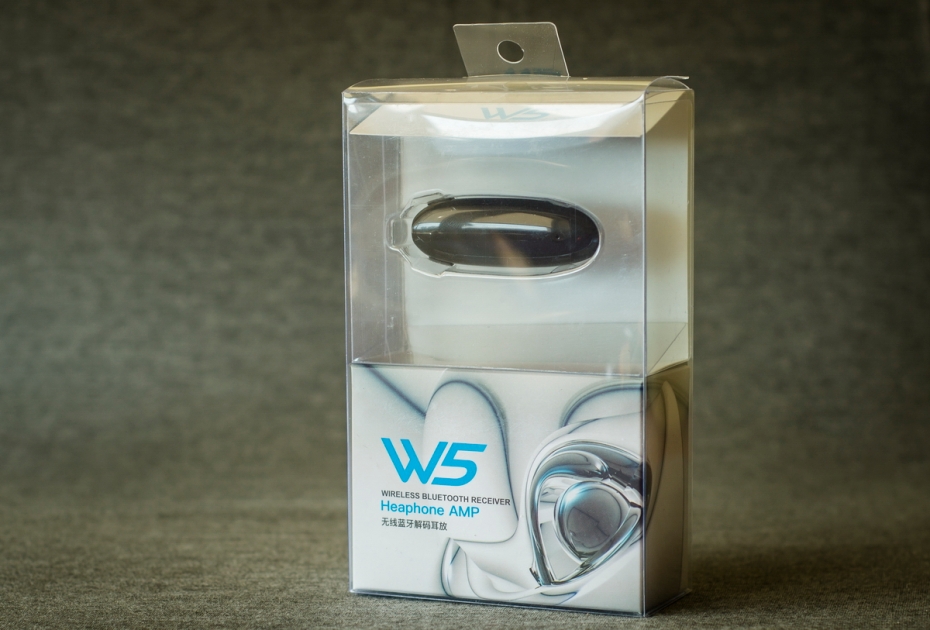
W5 comes in transparent box with the device secured by the special insert at the top part. Rest of the space is consumed by the accessories. Device name, brand logo and company contact information are printed on the inner cardboard layer.
Box contents:
- HiBy W5 BT receiver
- device charging cradle
- microUSB type-C -> USB A cable
- user manual
- final production versions of W5 would also have instruction manual and stickers on the left side of the box

Yes, in fact HiBy follows the trend and has developed special cradle for W5 the only purpose of which is to charge the device. It doesn’t mean that you cannot use it for storing or carrying W5 as it has the folding cover but the main idea is to use it as power bank whenever required.

W5 is quite small device with the dimensions of 61.7x21x17.6mm (with clip). Looks futuristic and intrigues by the absence of any control elements. Its smooth and elongated body consists of two parts — black glossy plastic top and brushed stainless steel bottom. Parts are perfectly aligned, no gap here.

Microphone opening is located at the bottom part of front cover. Steel back contains charging contacts and clip grooves.

3.5mm audio output is located at the top edge.
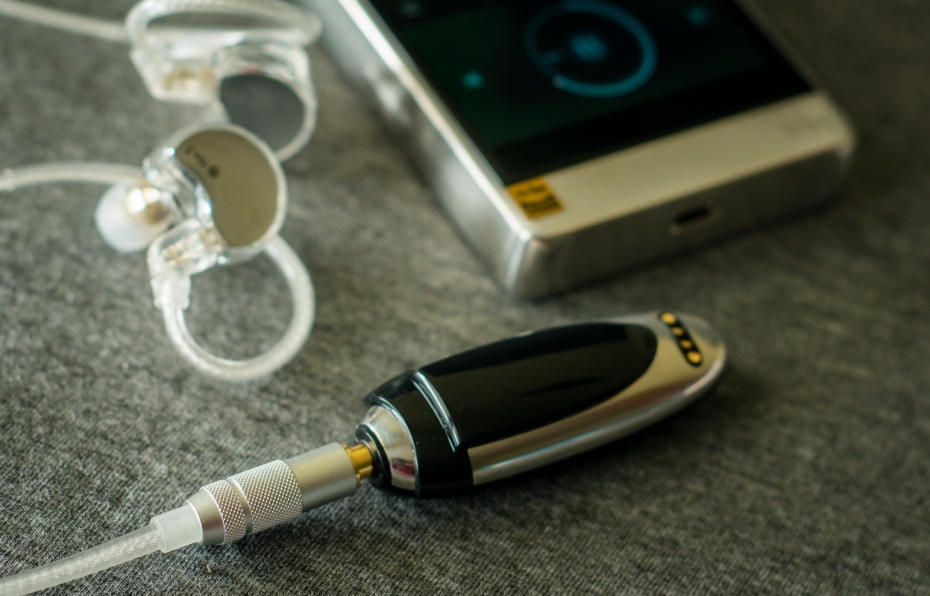
Plastic clip is detachable, feels quite secure and durable.
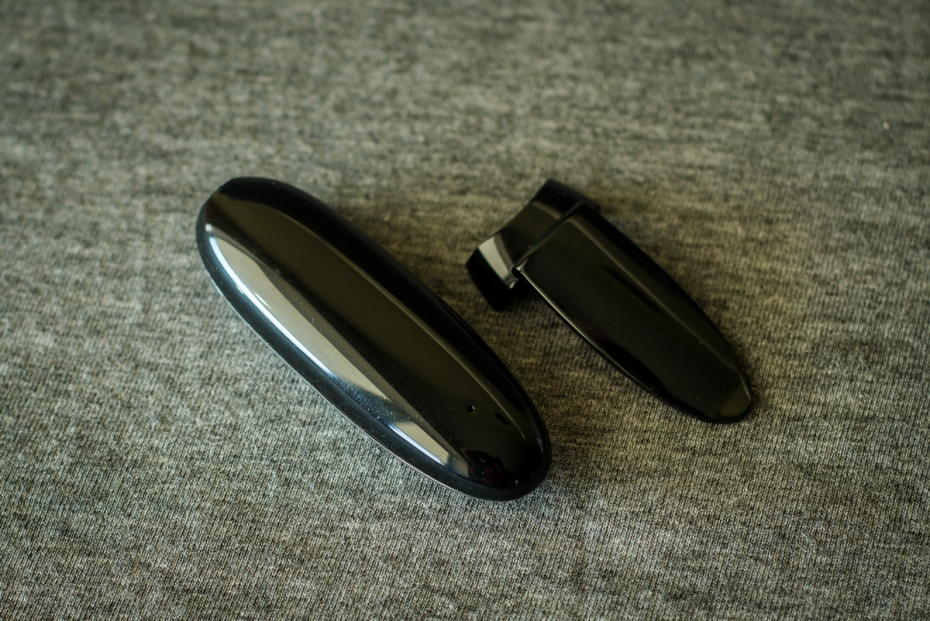
The most interesting starts when you try to operate the device (concerning that there is no physical control elements or screen). Upper part of top plastic cover is semitransparent and hides circle LED element combined with the touch sensor. Not easy to discover unless W5 is placed on its cradle for charging. Charging process would immediately reveal the position of hidden element by blinking with red LED. Let’s see how is looks (in this case it would blink blue due to fully charged state):

W5 cradle is not that mysterious but perfectly does the job. It is made of black glossy plastic, features foldable top cover with special soft insert to prevent W5 body from scratches and movements, spring-loaded W5 charging pins, 3 blue LED lights to indicate the amount of charge / charging process and microUSB type-C charging port. We’ve even managed to remove W5 bed from cradle and take a look at the HW part. Everything looks fine and neat:

HiBy W5 operation:
Charging process can be done in several ways:
- Charging only the cradle from USB power supply which takes approximately 2 hours from fully discharged state. Triple blue LED indicator on the front part of the cradle shows the amount of charge gained during the charging process. Cradle battery is 1000mAh LiPO.
- Charging both W5 and cradle simultaneously by placing W5 in its cradle when it takes charge from USB power supply. Charging time would change accordingly to the current state of W5 battery (+1h at most). W5 would also blink with its red LED to indicate charging process.
- Use cradle as power bank to charge W5 battery. In this case cradle LED would indicate how much own battery capacity is left and W5 red LED would blink as it takes charge. Cradle battery has enough capacity to fully charge W5 five times (W5 battery is 150mAh LiPO).
Here is LED indication pattern of the cradle:
Charging process:

And here is how the charging indication goes on W5 itself:

Unfortunately, it is not possible to use 3.5mm audio output of W5 while it is on charge due to the physical limitations of audio jacks connection while the device is placed in the cradle. At the same time, W5 stays fully operational… It seems that there is a room for physical improvement of the cradle or future mods by end users.
Controls:
While not very obvious from its look, W5 incorporates touch sensor button as multifunctional control key with «vibrate on tap» feedback. Sensor shares the same front face spot of the LED indicator. Feedback vibration force is pretty strong to confirm the action. As any other sensor type key it does exhibit a slight lag between the actual finger press and the resulting activity but it is totally acceptable and pretty comfortable to use.
Here is the list of all button functions:
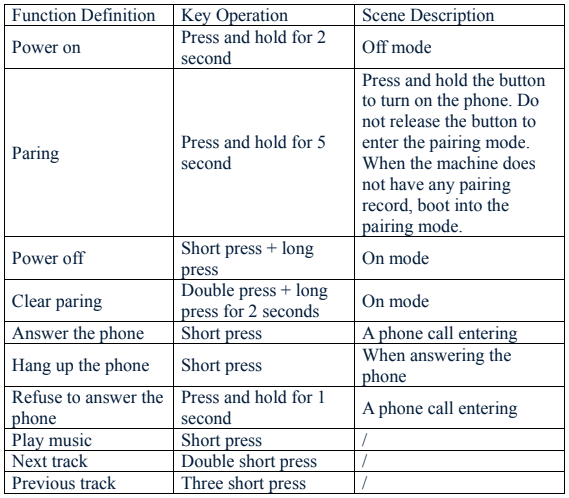
Of course, W5 LED indicates different working state as well:

Pairing and working distance:
First W5 pairing is done by holding the button for ~5 seconds. It would initiate pairing process while LED indicator would be quickly flashing with blue color. No problems with discovering and connecting from the smartphone side. It would list HiBy W5 among other discovered or paired devices. First connection as well as all further reconnections after power cycle are almost immediate.

No problems either if your device is not supporting Bluetooth 5.0 standard as it is backward compatible with the previous versions and UAT is compatible with 4.2 version as well. But Hiby recommends to use Bluetooth 5.0 to get the smooth implementation
In theory, according to new standard specifications, working distance with BT 5.0 should be 4 times larger than in the previous version. In real life, smooth experience would greatly depend of the environment and radio band workload that might and would affect the amount of packets lost, especially with the higher data transfer rates. UAT codec features the highest data rate ever for BT audio stream…. Consequently, more prone to different types of interruptions. Our tests show that it is not a problem when you keep W5 and a smartphone in different pockets but might become an issue when you have to send data through 10 meters of working space with some obstacles like people, other transmitting devices, walls, etc. Therefore, despite new BT standard capabilities, you should expect smooth operation at the same working distance as everyone got used to before — ~10 meters at open space.

HiBY W5 applications:
There is a software part for W5 developed by HiBy for Android OS to provide more functions and better interaction. For now it is split into two different applications, both in beta state. Both would eventually merge with HiBy Music APP by the time of W5 market release. The compatibility of this software with other operating systems is yet to be declared (iOS compatibility is already declared).
Software part functionality:
- W5 settings:
- Bluetooth audio codec
- Sample rate
- Bit depth
- Current codec additional parameters

*this is similar to menu options found under Settings->Developer Options in Android OS. So, instead of sending people to activate hidden «Developer Options», HiBy has integrated it to its own software and already added UAT codec profile there.
- W5 information: Name / MAC / battery level / battery status / RSSI / API version
- LED: switch W5 LED on|off
- Equalizer: BASS Boost / 3D / Presets (lets you use slots to store own presets)
- Remote control: buttons Volume UP/DOWN/Mute / PLAY/PAUSE/STOP / NEXT/PREVOUS. (Perhaps, the remote would be used with any default music application if you are not using HiBY Music)
- Battery: full information about the battery state and charging process
- Upgrade: W5 FW upgrade screen with file browser to navigate to FW file

Most of the functions are perfectly working already.
As already mentioned — all those functions would merge with HiBy Music app and let you control W5 receiver without the need of switching between different applications or Bluetooth system settings.
Sound tests:
Testing process: Tanchjim Oxygen IEMs wired to Hidizs AP80 DAP or Xiaomi Note 5 versus HiBy W5 connected to HiBy R6Pro DAP over Bluetooth (UAT and LDAC audio codecs). This gives us the understanding of how W5 sounds against one of the most popular DAP’s around.

Lows and midbass:
Lower range is quite exposed and has very good deep bass reach. Not overemphasized, nor shadowing other frequencies but it’s presence is evidently large. Texturing is moderate, can’t quite compete with wired connection to DAP but totally fine in case of good IEMs and much better than produced by a regular smartphone audio output. Overall bass presence and extension influences the sound signature, giving a picture a warm presentation. In fact, if bass texturing were a bit higher — W5 might have been almost similar to AP80 DAP bass reproduction.
Midbass power and dynamics are very good. Drums sound good, rich and engaging. Seems that W5 amp section is having enough potential to drive anything up to 80Ω. Most of the IEMs are not a problem at all. The only full-sized headphones we’ve tested were AudioTechnica ATH-M50 (48Ω) which also produced good results in terms of midbass dynamics, speed and articulation.

Mids and vocals:
Mids are little bit laid back in comparison to lows and treble. Voices are perceived as a bit thin and distant with not much of difference in presence between male and female vocals. There is a slightly warm timbre influenced by lows and this also helps to have a good control over lisping or harsh notes. Resolution on voices is moderate while string instruments are showing slightly better results. In overall, mids sound pretty intimate and warm, with smooth sound transitions. Even though, the clarity and dualization of mids is higher than Note 5 smartphone can produce on its own with wired connection.

Treble:
Treble section is slightly emphasized and brings up the additional clarity and imaginary resolution to the sound. While the extension is less than with wired type of connection, treble amount of presence still manages to balance the lower end. Resolution is moderate here as well. Such situation is common for all BT audio receivers as the most of noise floor and audio downgrades are affecting our perception of extensions on both ends, also reduces clarity on treble.
Sound in overall:
In fact, HiBy W5 sounds very good when advanced BT audio codecs are used. Some lack of resolution or texturing gets evident only in the direct comparison to wired method of connection to good DAPs. This is perfectly logical. On the other hand, only few smartphones, tablets or PCs would come close to W5 audio quality level and driving potential even with wired IEMs. Let’s say that W5 as a DAC/AMP is much better than regular smartphone bare audio output while the wireless method of sending data is not making it much less superior.

Definitely, we can tell the difference between using wired connection to DAP or smartphone and sending data over the air to W5 BT receiver. The main difference is higher noise floor and the latency (which is actually not that big to disturb from watching video content). At the same time, while wired DAP is inarguably providing the best sound quality to your IEMs, the results produced by vast majority of multifunctional devices (such as regular smartphones with no dedicated DAC chip) would fall short in terms of output power, driving potential, overall clarity, resolution and instrument separation. Therefore, those who use their smartphones for music would gain the wireless freedom together with the better sound quality in overall. More experienced audio geeks who possess good piece of equipment and searching for wireless receiver would not be disappointed either, as the difference in sound quality between wire and BT is not that obvious.
UAT V/S LDAC sound quality:
Honestly — hard to tell. When LDAC is set to its maximum data transfer rate of 990Kbps the only difference is that all of your >96KHz tracks would be downsampled to 96KHz. Roughly, it should result in less accuracy and extension, especially on treble. But the main question is whether this difference is audible… There are some people who would pretend to hear the difference between codecs but most of the blind tests show very small rate of success, if any. Therefore, we would say that the main advantage of running UAT instead of LDAC is a pleasing notion of the fact that nothing is being downsampled and you get the best possible audio quality. Why would you spend so much efforts finding 24bit/192KHz albums than?

At the same time, sound improvement between the basic SBC codec and anything that was designed to do much better job (aptX_HD, LDAC, UAT) is apparent. At least for the trained ears of long-time audio equipment reviewers and musicians. Sound is not that dry and narrow, overall resolution is higher, both ends are more extended, you get more micro dynamics… IMHO.
Sound quality in voice calls:
Haven’t noticed any issues during the voice calls. W5 microphone sounds clear and pretty loud for the other party. Echo effect was not observed either. There is also a possibility to start, dismiss or end the call with sensor button.
Compared to Colorfly BT-C1:

Colorfly BT-C1 is very good and neutral Bluetooth receiver in terms of sound quality. It also can be used as USB DAC which is its main purpose, actually. It is not very convenient to be carried around in your pocket, doesn’t have that good battery life and lacks the output power (only 35mW@32Ω). The most advanced BT audio codec is represented by Apt-X_LL. Sound wise, BT-C1 is more gentle and more resolving across the AFR but at the same time more dry and much less fun to listen to. Adding here its low driving potential — and it is not getting anywhere close to HiBy W5. We would say thay BT-C1 should be considered only for stationary and wired use in combination with active speakers or as a DAC for home audio system. HiBy W5 is more universal in terms of usage scenarios, sounding brighter and more engaging, having more driving power and using better BT audio codecs.
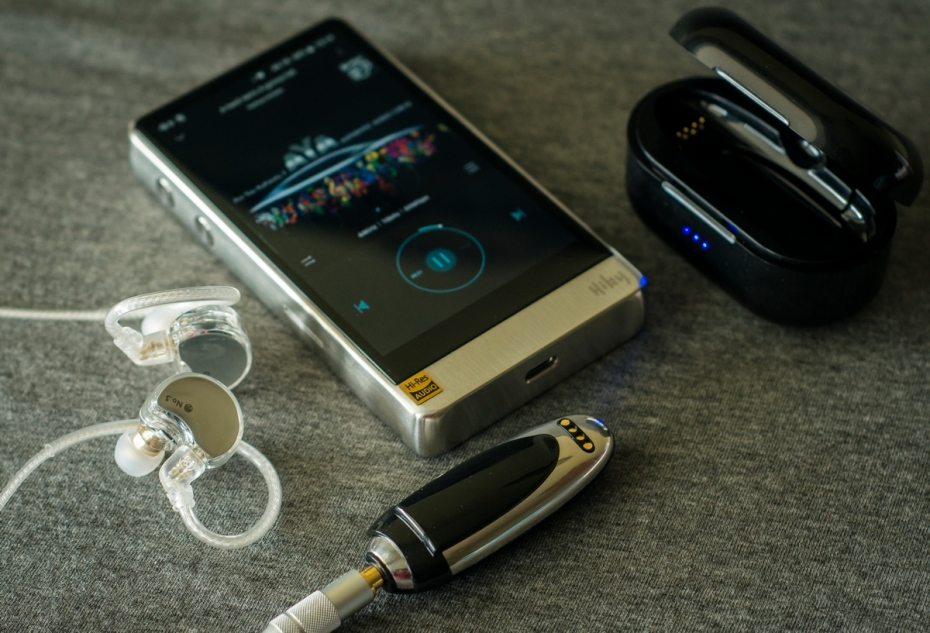
Conclusion:
After examining early sample of HiBy W5 very closely, we can conclude that it is the most advanced and, in fact, a revolutionary Bluetooth audio receiver. Apart from traditionally capable hardware, great design and solid user experience, HiBy has presented the world with their own vision of supreme Bluetooth audio quality. They have taken the lead by the development of 192KHz Bluetooth Ultra Audio Transmission codec which, perhaps, would emerge into new industry standard. It also means new spin of competition on the market with further technical advance and benefits to all audio fans. Such innovations and related efforts should be supported by all possible means, that is why we would be standing in a first row of crowdfunding campaign when it would be launched.
Link to official HiBy W5 page

